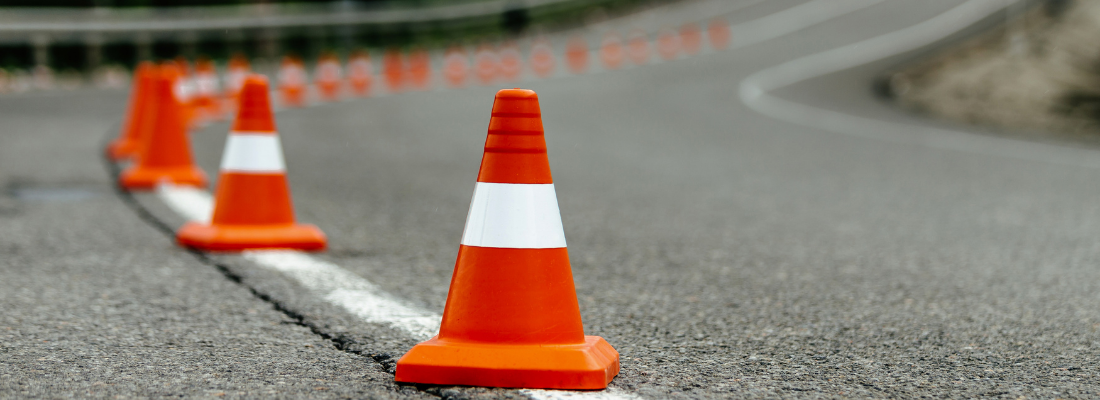According to the OECD, pioneers Sweden and The Netherlands introduced a proactive, integral approach in the 1990s, using labels as 'Vision Zero' (Sweden) and 'Sustainable Road Safety' (NL). What has been done so far, what are the successes and challenges about road safety and what kind of systems have been developed to improve road safety? Something widely discussed during the fourth episode of Intertraffic ON AIR by Maria Krafft, Swedish Transport Administration’s director of Traffic Safety and Sustainability, Mehmet Aras, Global Segment Leader Transportation and Smart Mobility, at intelligent lighting specialists Signify and Peter van der Knaap, Managing Director of SWOV, the Dutch Institute for Road Safety Research.
Vision Zero is a multi-national road traffic safety project that aims to achieve a highway system with no fatalities or serious injuries involving road traffic. Vision Zero was introduced in 1995 and over the past 26 years it has been variously adopted in different countries (with Sweden, the Netherlands, Canada, the UK and US the first five to fully embrace the notion). The countermeasures implemented in Vision Zero continue to be education, enforcement and engineering, applied since the 1930s.
The concept of Vision Zero is based on an underlying ethical principle that "it can never be ethically acceptable that people are killed or seriously injured when moving within the road transport system."
In Sweden road deaths have dropped dramatically in the past 20 years. However, the technology designed to save lives is only effective if drivers change their driving habits, stick to the rules and follow Vision Zero’s principles.
Read more about Vision Zero >
According to Peter van der Knaap of SWOV, Institute for Road Safety Research in the Netherlands, a sustainability-led approach is key to the overall success of any scheme designed to save lives. ‘The Sustainable Road Safety (SRS) approach of the Netherlands aims to prevent crashes whenever possible and to prevent the risk of serious injury much as possible. Like Vision Zero, SRS is a ‘safe system’ approach that combines the three E’s: engineering, education and enforcement in a scientifically based way. The road network is given hierarchical structure consisting of access roads, distributor roads and through roads. Also thousands of roundabouts and many separated bicycle paths have been constructed. Evaluation research proved that SRS helps save many people from fatal road crashes and severe injuries. In 2018 SWOV (Dutch institute for road safety research launched the third edition of the SRS approach, in which five road safety principles are presented: functionality of roads, (bio)mechanics, psychologics, effectively allocating responsibility and learning an innovation within the traffic system.
Maria Krafft, Swedish Transport Administration’s director of Traffic Safety and Sustainability, has a plain and simple message. ‘Follow the rules of Vision Zero. Look what happened with the introduction of seatbelts.’ Sweden has much more fatalities on the 70, 80 and 90 km roads, than on the other ones. They are much more dangerous because of the oncoming traffic to separate the traffic. ‘oOur roads that have 110, 120 or higher kilometre signs are more safe than the slower ones.’ Krafft also believes that you need a speed management plan that is measurable and easy to follow, and the safety market needs to be stimulated. For example in Sweden, they are stimulating the market to bring safe vehicles. The test programme rating system helps a lot with this. ‘More than 90% of all new cars coming out have at least five stars,’ said Krafft. This means that it’s a very safe car, that provides for better road safety.
‘More than 90% of all new cars coming out have at least five stars.’- Maria Krafft, Swedish Transport Administration
Peter van der Knaap, Managing Director of SWOV, the Dutch Institute for Road Safety Research and SWOV’s vision is clear: ‘In a sustainably safe road traffic environment the infrastructural layout considerably reduces the risk of crashes. Nearly all crashes have their origin in human error. The purpose is clear: we haveto reduce the number of errors that are committed, by providing clear traffic rules and road design and at the same time to construct infrastructure and vehicles in a ‘forgiving’ way that errors do no longer have fatal consequences.’
‘For every €1 spent on road safety you get €3 to €4 back in benefits and measurable sustainability,’ says Van der Knaap. ‘Investing in good infrastructure and a safe system is really important. Road safety innovations have many social benefits. This makes them a good value for money. It is the huge amount of suffering that people bring down. We improve sustainability too. When someone takes effective measures against speeding, it will have different side effects in traffic. Air pollution and noise pollution for instance. It all works together in many different ways.’
‘For every €1 spent on road safety you get €3 to €4 back in benefits and measurable sustainability.’- Peter van der Knaap, SWOV
‘Human factors are the primary focus: by starting from the demands, competencies, limitations and vulnerabilities of people, the traffic system can be realistically adapted to achieve maximum safety.’
In March 2021 five experts from across Europe told us that industries such as infrastructure and construction have been less able to adapt to the new reality of COVID-19. The reason of this is because they are hardware and not software. What are the barriers to success?
For Mehmet Aras, Global Segment Leader Transportation and Smart Mobility, at intelligent lighting specialists Signify the emphasis for improving road safety and cutting the number of humans killed or seriously injured is on identifying and implementing the right light - and on demand. ‘As of today, only 3% of the road and streets light globally are connected.’ If the systems are connected, it makes it easier to utilize it more and control in real time. Aras expects that in 2027, 29% of the road and streets light will be connected.’ This is a bigger growth, but it will take all these year.
‘A PIARC study revealed that lighting in tunnels is not up to the same standard as it is on other parts of the road network. Tunnel safety should be an integral part of Vision Zero,’ insists Aras. Aras believes safer, reliable and more efficient highways should focus on intelligent lighting, safety, the environmental impact, encourage economic growth and improve road user satisfaction.
Cycling has increased thanks tot he pandemic. Luckily, more and more cities have improved their cycling infrastructure by creating seperate bike lanes. European Cyclists Federation Alexander Buczyński: ‘Cycling is traditionally perceived as a local and primarily urban mobility issue. Most cycle trips are indeed relatively short and the potential for cycling is highest in densely populated cities. However, across the EU as much as 42% of cyclist fatalities occur outside urban areas which suggests that cycling infrastructure is not only needed in cities.’
‘Lots of issues are at play here but an important factor is that cycling is often not considered on the national or European level. This has many consequences, including a lack of coordinated approach, and cycling being forgotten about in major infrastructure projects.’
Like Pieter Litjens (CROW) mentioned in the fifth episode of ON AIR: ‘Show pedestrians and cyclists that you care by giving them a real position in the infrastructure.’ Natalie A. Draisin, Director of the FIA Foundation’s North American Office and United Nations Representative: ‘In the US, we have an extremely high motorization because of a love affair with our cars. This leads us to build roads for cars, not people. We’ve seen this failed model exported globally.’
Not to mention safety for children. Each day 500 children are killed in preventable traffic crashes around the world. Therefore, the United Nations has included road safety in its Sustainable Development Goals (SDG) and set Global Road Safety Performance Targets. In the end, we all want children to be able to cycle to school in a safe way and parents not to be worried. Find examples given by Bicycle Mayors from several cities.






